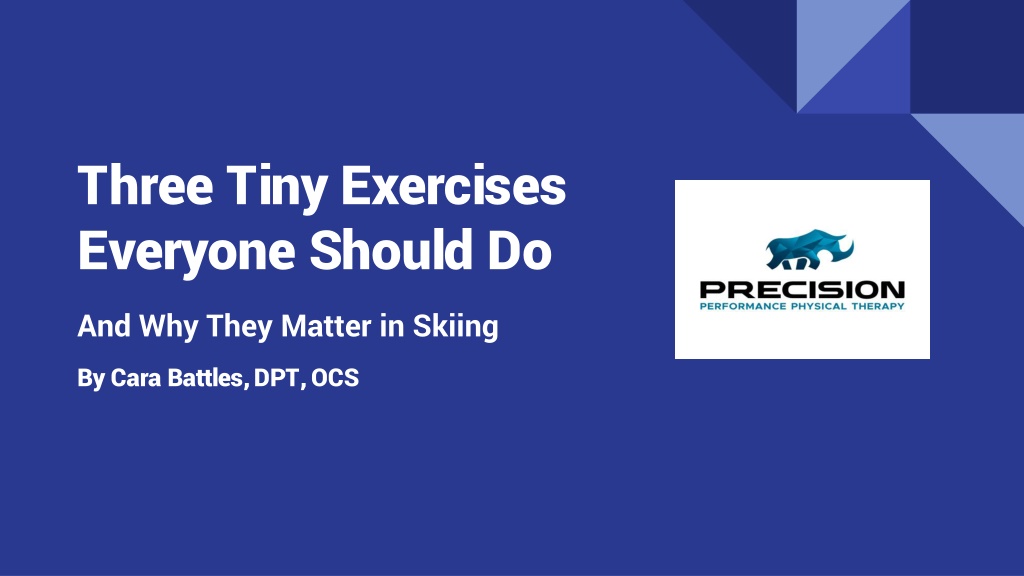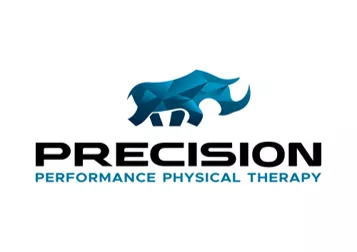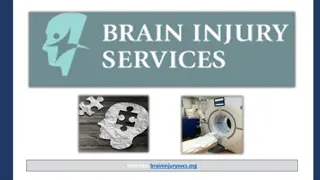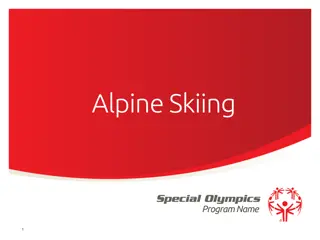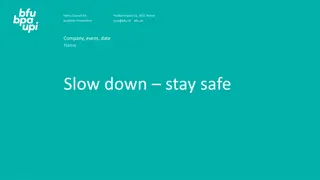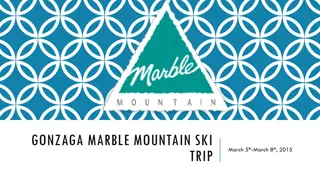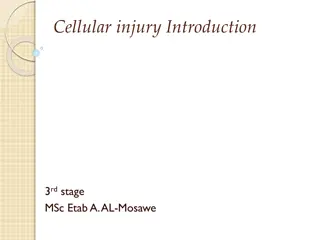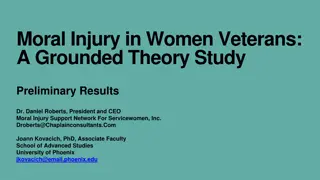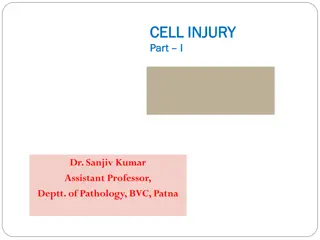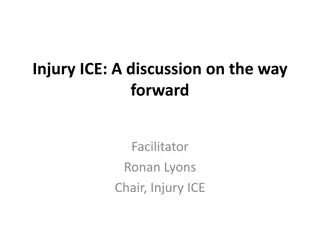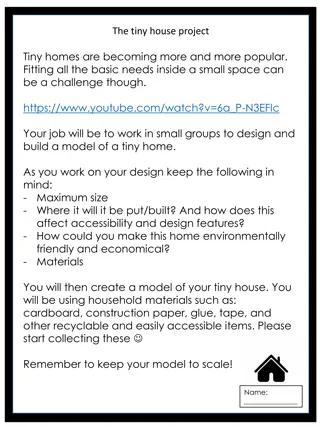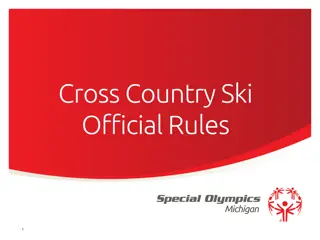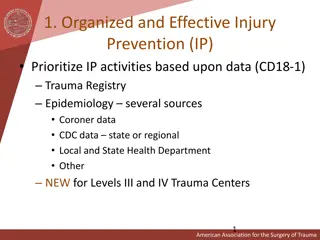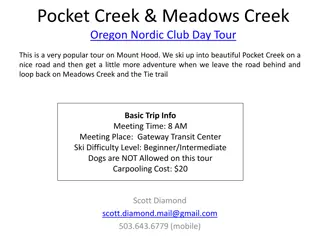Three Tiny Exercises for Injury Prevention in Skiing
Dr. Cara Battles, a Doctor of Physical Therapy, shares three essential exercises for preventing injuries in skiing. These exercises target key muscle groups to improve posture, reduce muscle tension, and enhance shoulder mechanics, ultimately reducing the risk of common overuse injuries in Nordic skiing. Learn how to incorporate these tiny exercises into your routine to enhance your performance on the slopes.
Download Presentation

Please find below an Image/Link to download the presentation.
The content on the website is provided AS IS for your information and personal use only. It may not be sold, licensed, or shared on other websites without obtaining consent from the author.If you encounter any issues during the download, it is possible that the publisher has removed the file from their server.
You are allowed to download the files provided on this website for personal or commercial use, subject to the condition that they are used lawfully. All files are the property of their respective owners.
The content on the website is provided AS IS for your information and personal use only. It may not be sold, licensed, or shared on other websites without obtaining consent from the author.
E N D
Presentation Transcript
Three Tiny Exercises Everyone Should Do And Why They Matter in Skiing By Cara Battles, DPT, OCS
Dr. Cara Battles Doctor of Physical Therapy, Orthopedic Clinical Specialist Owner/Clinician: Precision Performance Physical Therapy Team PT Loppet Junior National Team PT for 2024 Loppet XC World Cup Prior Team PT: MN United Professional Soccer Coach: Strength and XC for Loppet Nordic Racing Athlete: competitive Nordic skier/mountain bike and gravel racer
Why Do Injuries Happen? Training error/overuse -most common Imbalanced muscle length and strength A wipe out
Common Overuse Injuries in Nordic Skiing Foot/ankle pain -arch and Achilles tendon Knee pain -front of the knee Shoulder pain -biceps tendon/RC Elbow pain-tennis or golfers elbow Low back pain Hip pain -side of the hip or hip flexor
How to Reduce Risk of Injury Skiing lessons Cross train Strength train Therapeutic exercise Three tiny exercises
Three Tiny Exercises! All injuries are unique but there are commonalities Such as ? Shoulder/neck/elbow pain: need work on the muscles between the shoulder blades Back/hip/knee/ankle pain: need work on their gluteal muscles Everyone: needs work on their transverse abdominal muscles
Three Tiny Exercises 1.Shoulder blade squeeze 2.Side-lying leg lift (hip abduction) 3.Transverse abdominal sets
Shoulder Blade Squeeze How? Sit or stand tall, like there is a string pulling you up from the top of your head Pull your shoulders down Pull your shoulders back to pinch shoulder blades together KEY: stay relaxed by your neck
Shoulder Blade Squeezes Why? Improves posture Creates space in the shoulder to avoid pinching of tendons Decreases muscle tension around the neck Improves shoulder mechanics
Side Lying Leg Lift How? Lie on your side with your hips rolled slightly forward Raise your top leg up and slightly back Keep the knee straight, move from the hip
Side Lying Leg Lift Why? Strengthens your glutes Improves core strength Improves hip/knee/ankle alignment Takes stress off the low back when standing on one leg (or gliding on one ski!)
Transverse Abdominal Set How? Sit up very tall Place your hand on your stomach, below your belly button Draw your stomach away from your hand Do not flex your abs, just draw in
Transverse Abdominal Set Why? Major contributor to core stability Stabilizes the spine Keeps the pelvis neutral -no sway backs
How often? 3 to 7 days a week 30 repetitions of each
Strength Training for Women Increasing resting metabolism Increasing fat burning while you exercise Improves posture Improves tendon strength which improves joint stability and reduces injury risk Improves bone density (important for women and men) Reduces fat gains and improves lean muscle mass In my opinion: better absorb wipe outs and missteps on the trail
Strength Training Peri/post menopausal women Changing hormone levels lead to Decreasing muscle mass Difficulty building muscle Decreased strength of muscle contractions Critical that we are intentional with strength training to maintain and gain strength
Strength Training- HOW? Overload Principle To improve strength, one must continually increase the demands placed on the system, forcing it to adapt Can not just do what you always did Yoga is NOT strength training Body weight exercises A good start, but will become too easy Grab the weights!
Recommendations Strength 2x/week Yoga 1-2 x/week Cardio: 4-6x/week One day off or recovery day yoga day?
Recommendations Body work: Listen to your body, it will talk to you! Respect your injuries Massage Rest Therapeutic exercise
Recovery Dr. Peter Tierney SHIT Recovery Framework
Lets Talk About GLUTES! You received a band in your swag bag. Here s what you do with it! Side stepping Monster walks-forward/back Clamshells Fire hydrants All fours hip extension/leg kick out Bridging
